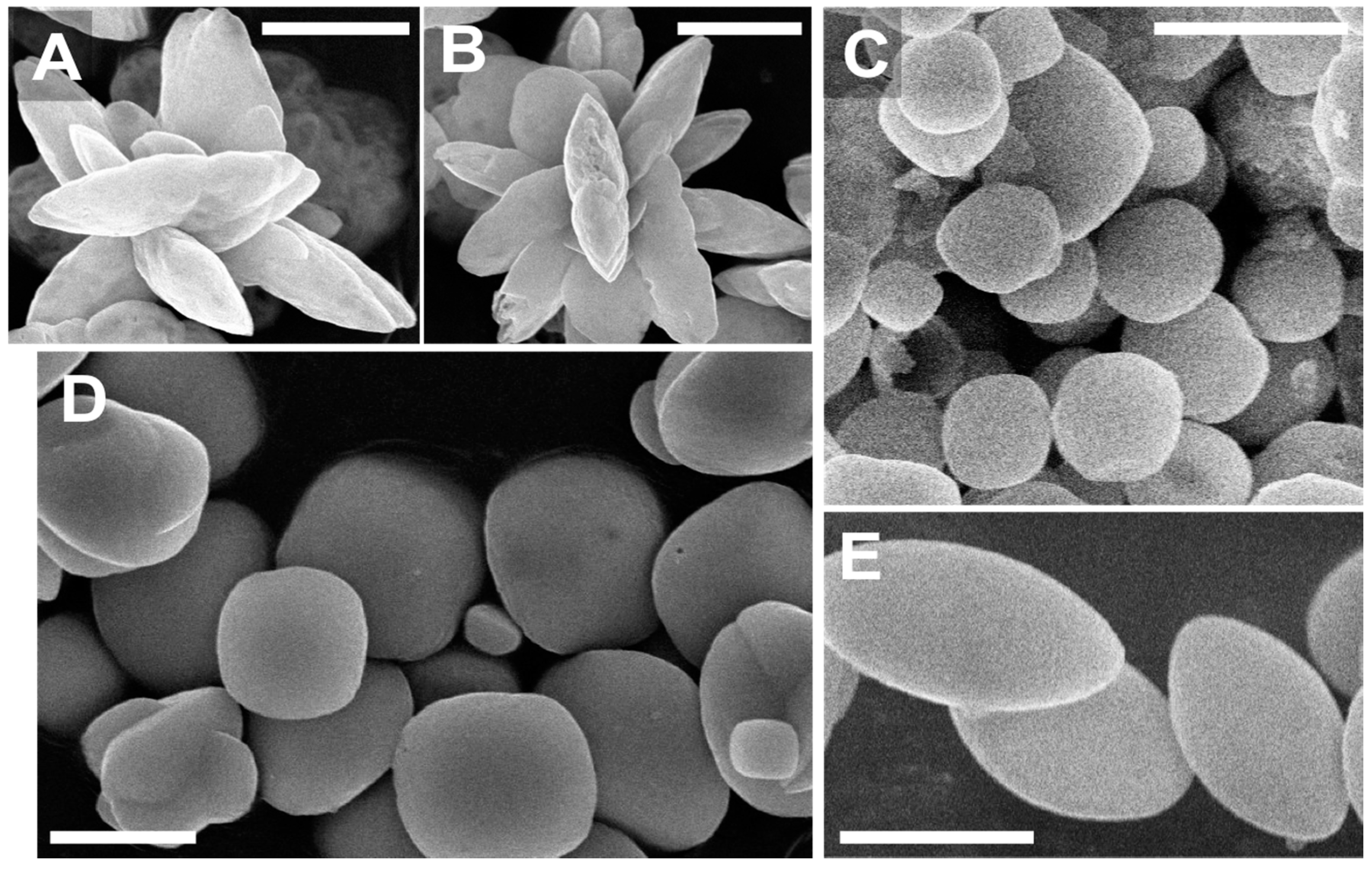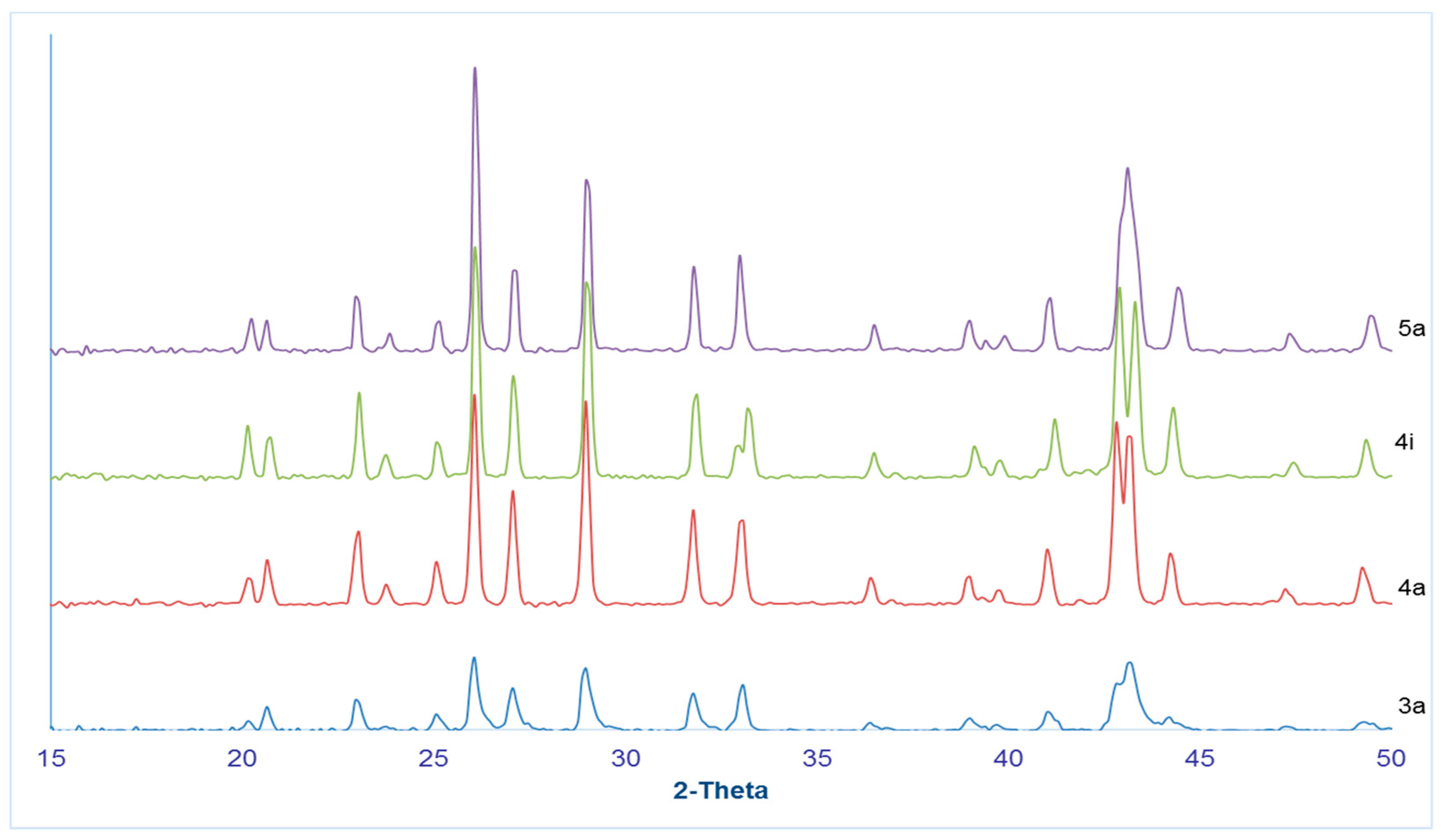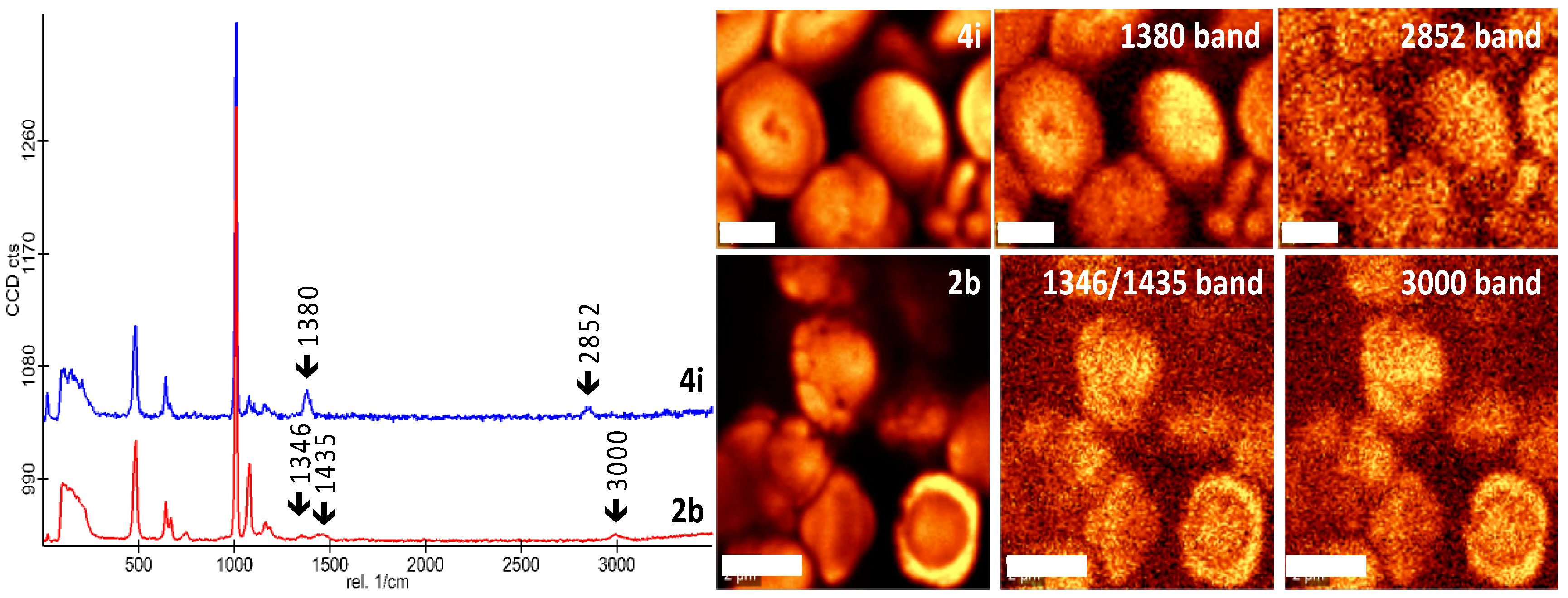Controls on Barite Crystal Morphology during Abiotic Precipitation
Abstract
:1. Introduction
2. Methods
2.1. Experimental Design
2.2. Mineral Analyses
3. Results and Discussion
4. Conclusions
Author Contributions
Funding
Acknowledgments
Conflicts of Interest
References
- Burt, D.M.; Kirland, L.E.; Adams, P.M. Barite and Celestine detection in the thermal infrared—Possible application to determination of aqueous environments on Mars. In Proceedings of the 35th Lunar and Planetary Science Conference, League City, TX, USA, 15–19 March 2004. [Google Scholar]
- Huston, D.L.; Logan, G.A. Barite, BIFs and bugs: Evidence for the evolution of the Earth’s early hydrosphere. Earth Planet. Sci. Lett. 2004, 220, 41–55. [Google Scholar] [CrossRef]
- Bonny, S.M.; Jones, B. Diatom mediated Barite precipitation in microbial mats calcifying at Stinking Springs, a warm Sulphur spring system in Northwestern Utah, U.S.A. Sediment. Geol. 2007, 194, 223–244. [Google Scholar] [CrossRef]
- Chen, Y.X.; Zheng, Y.F.; Gao, X.Y.; Hu, Z. Multiphase solid inclusions in zoisite-bearing eclogite: Evidence for partial melting of ultrahigh-pressure metamorphic rocks during continental collision. Lithos 2014, 200, 1–21. [Google Scholar] [CrossRef]
- Jewell, P.W. Bedded Barite in the geological record. From Global to Microbial. SPEM Special Publication, Society for Sedimentary Geology. Mar. Authogenesis 2000, 66, 147–161. [Google Scholar]
- Bottrell, S.H.; Newton, R.J. Reconstruction of changes in global sulfur cycling from marine sulfate isotopes. Earth-Sci. Rev. 2006, 75, 59–83. [Google Scholar] [CrossRef]
- Sanz-Montero, M.E.; Rodriguez-Aranda, J.P.; Garcia del Cura, M.A. Bio-induced precipitation of Barite and celestite in dolomite microbialites, Examples from Miocene lacustrine sequences in the Madrid and Duero Basins, Spain. Sediment. Geol. 2009, 222, 138–148. [Google Scholar] [CrossRef]
- Senko, J.M.; Campbell, B.S.; Henriksen, J.R.; Elshahed, M.S.; Dewers, T.A.; Krumholz, L.R. Barite depositions resulting from phototrophic sulfide oxidizing bacterial activity. Geochim. Cosmochim. Acta 2004, 68, 773–780. [Google Scholar] [CrossRef]
- Bonny, S.M.; Jones, B. Controls on the precipitation of Barite (BaSO4) crystals in calcite travertine at Twitya Spring, a warm Sulphur spring in Canada’s Northwest Territories. Sediment. Geol. 2008, 203, 36–53. [Google Scholar] [CrossRef]
- Griffith, E.M.; Paytan, A. Barite in the ocean-occurrences. Geochemistry and paleoceanographic applications. Sedimentology 2012, 59, 1817–1835. [Google Scholar] [CrossRef]
- Younger, P. Barite Travertine from Southwestern Oklahoma and Western Central Colorado. Master’s Thesis, Oklahoma State University, Norman, OK, USA, 1986. [Google Scholar]
- Widanagamage, I.H.; Griffith, E.M.; Singer, D.M.; Scher, H.D.; Buckley, W.P.; Senko, J.M. Controls on stable Sr-isotope fractionation in continental Barite. Chem. Geol. 2015, 411, 215–227. [Google Scholar] [CrossRef]
- Elshahed, M.S.; Senko, J.M.; Dewers, T.A.; Spear, J.R.; Najar, F.Z.; Kenton, S.M.; Roe, B.A.; Krumholz, L.R. Bacterial diversity and sulfur cycling in a mesophilic sulfide-rich spring. Appl. Environ. Microbiol. 2003, 69, 5609–5621. [Google Scholar] [CrossRef] [PubMed]
- Dymond, J.; Suess, E.; Lyle, M. Barium in deep-sea sediment: A geochemical proxy for paleoproductivity. Paleoceanography 1992, 7, 163–181. [Google Scholar] [CrossRef]
- Dymond, J.; Collier, R. Particulate barium fluxes and their relationships to biological productivity. Deep-Sea Res. Part II 1996, 43, 1283–1308. [Google Scholar] [CrossRef]
- McManus, J.; Berelson, W.M.; Hammond, D.E.; Klinkhammer, G.P. Barium Cycling in the North Pacific: Implications for the Utility of Ba as a Paleoproductivity and Paleoalkalinity Proxy. Paleoceanography 1999, 14, 53–61. [Google Scholar] [CrossRef] [Green Version]
- Bertram, M.A.; Cowen, J.P. Morphological and compositional evidence for biotic precipitation of marine barite. J. Mar. Res. 1997, 55, 577–593. [Google Scholar] [CrossRef]
- London, D. The Barite roses of Oklahoma. Mineral. Rec. 2008, 39, 277–292. [Google Scholar]
- Ray, D.; Kota, D.; Das, P.; Surya Prakash, L.; Khedekar, V.D. Microtexture and distribution of minerals in hydrothermal Barite-silica chimney from the Franklin seamount, SW Pacific: Constraints on mode of formation. Acta Geol. Sin. 2014, 88, 213–225. [Google Scholar]
- Jamieson, J.W.; Hannington, M.D.; Tivey, M.K.; Hansten, T.; Williamson, N.M.B. Precipitation and growth of barite within hydrothermal vent deposits from the Endeavour Segment, Juan de Fuca Ridge. Geochim. Cosmochim. Acta 2016, 173, 64–85. [Google Scholar] [CrossRef] [Green Version]
- Hofmann, R.; Baumann, A. Sr isotopic composition of brines from West German thermal springs. Neues. Jahrb. Geol. Palaontol. Mo. 1986, 10, 591–598. [Google Scholar]
- Han, H.F.; Zhu, X.; Wen, H.; Zhao, C.; Xiao, F. Submarine hydrothermal contribution for the extreme element accumulation during the early Cambrian, South China. Ore Geol. Rev. 2017, 86, 297–308. [Google Scholar] [CrossRef]
- Haymon, R.M.; Kastner, M. Hot-spring deposits on the East Pacific Rise at 21° N—Preliminary description of mineralogy and genesis. Earth Planet. Sci. Lett. 1981, 53, 363–381. [Google Scholar] [CrossRef]
- Fu, B.S.; Aharon, P.; Byerly, G.R.; Roberts, H.H. Barite chimneys on the Gulf-of- Mexico Slope—Initial report on their Petrography and Geochemistry. Geo-Mar. Lett. 1994, 14, 81–87. [Google Scholar] [CrossRef]
- Paytan, A.; Mearon, S.; Cobb, K.; Kastner, M. Origin of marine barite deposits: Sr and S isotope characterization. Geology 2002, 30, 747–750. [Google Scholar] [CrossRef]
- Dean, W.E.; Schreiber, B.C. Authigenic barite. In Proceedings of the Deep-Sea Drilling Project, Initial Reports; Gardner, J., Herring, J., Eds.; Government Printing Office: Washington, DC, USA, 1977; Volume 41, pp. 915–931. [Google Scholar]
- Breheret, J.-G.; Brumsack, H.J. Barite concretions as evidence of pauses in sedimentation in the Marnes Bleues Formation of Vocontian Basin (SE France). Sediment. Geol. 2000, 130, 205–228. [Google Scholar] [CrossRef]
- Shikazono, N. Precipitation of Barite in sulfate-sulfide deposits in back-arc basins. Geochim. Cosmochim. Acta 1994, 58, 2203–2213. [Google Scholar] [CrossRef]
- Kowacz, M.; Putnis, C.V.; Putnis, A. The effect of cation:anion ratio in solution on the mechanism of Barite growth at constant supersaturation: Role of desolvation on the growth kinetics. Geochim. Cosmochim. Acta 2007, 71, 5168–5179. [Google Scholar] [CrossRef]
- Widanagamage, I.H.; Schauble, E.A.; Scher, H.D.; Griffith, E.M. Stable strontium isotope fractionation in synthetic Barite. Geochim. Cosmochim. Acta 2014, 140, 58–75. [Google Scholar] [CrossRef]
- Boon, M.; Jones, F. Barium sulfate crystallization from synthetic seawater. J. Cryst. Growth 2016, 16, 4646–4657. [Google Scholar] [CrossRef]
- Wong, D.C.Y.; Jaworski, Z.; Nienow, A.W. Effect of ion excess on particle size and morphology during barium sulfate precipitation: An experimental study. Chem. Eng. Sci. 2001, 6, 727–734. [Google Scholar] [CrossRef]
- Judat, B.; Kind, M. Morphology and internal structure of barium sulfate—Derivation of a new growth mechanism. J. Colloid Interface Sci. 2004, 269, 341–353. [Google Scholar] [CrossRef] [PubMed]
- Jones, F.; Olivera, A.; Parkinson, G.M.; Rohl, A.L.; Stanley, A.; Upson, T.J. The effect of calcium ions on the precipitation of barium sulphate 1: Calcium ions in the absence of organic additives. J. Cryst. Growth 2004, 262, 572–580. [Google Scholar] [CrossRef]
- Jones, F.; Jones, P.; Ogden, M.I.; Richmond, W.R.; Rhol, A.L.; Saunders, M. The interaction of EDTA with barium sulfate. J. Colloid Interface Sci. 2007, 316, 553–561. [Google Scholar] [CrossRef] [PubMed] [Green Version]
- Appleo, C.A.J.; Postma, D. Geochemistry, Groundwater and Pollution, 2nd ed.; CRC Press: Boca Raton, FL, USA, 2005; pp. 152–154. [Google Scholar]
- Mavromatics, V.; Immenhauser, A.; Buhl, D.; Purgstaller, B.; Baldermann, A.; Dietzel, A. Effects of organic ligands or Mg partitioning and Mg isotope fractionation during low-temperature precipitation of calcite in the absence of growth rate effects. Geochim. Cosmochim. Acta 2017, 207, 139–153. [Google Scholar] [CrossRef]
- Hennessy, A.J.B.; Graham, G.M. The effect of additives on the co-crystallization of calcium with barium sulphate. J. Cryst. Growth 2002, 237–239, 2153–2159. [Google Scholar] [CrossRef]
- Smith, E.; Hamilton, J.; Davison, T.; Fullwood, N.J.; McGrath, M. The effect of humic substances on barite precipitation-dissolution behavior in natural and synthetic lake waters. Chem. Geol. 2004, 207, 81–89. [Google Scholar] [CrossRef]
- Benton, J.; Collins, I.R.; Grimsey, I.; Parkinson, G.M.; Rodger, S. Nucleation, Growth and Inhibition of Barium Sulfate-controlled Modification with Organic and Inorganic Additives. Farady Discuss. 1993, 95, 281–297. [Google Scholar] [CrossRef]
- Freeman, S.R.; Jones, F.; Ogden, A.O.; Richmand, W.R. Effect of benzoic acids on barite and calcite precipitation. Cryst. Growth Des. 2006, 6, 2579–2587. [Google Scholar] [CrossRef]
- Gustafsson, J.P. Visual MINTEQ Version 2.52. Available online: http://www.lwr.kth.se/English/OurSoftware/vminteq/ (accessed on 15 December 2016).
- Bai, H.; Zhang, W.; Dengu, H.; Fu, Q.; Zhang, Q. Control of crystal morphology in Ploy (1-lactide) by adding nucleating agent. Macromolecules 2011, 44, 1233–1237. [Google Scholar] [CrossRef]
- Singer, D.M.; Griffith, E.M.; Senko, J.M.; Fitzgibbon, K.; Widanagamage, I.H. Celestine in a sulfidic spring barite deposit—A potential biomarker? Chem. Geol. 2016, 440, 15–25. [Google Scholar] [CrossRef]
- Glynn, P. Solid-solution solubilities and Thermodynamics: Sulfates, Carbonates and Halides. Rev. Mineral. Geochem. 2000. [Google Scholar] [CrossRef]
- Antao, S.M. Structural trends for celestite (SrSO4), anglesite (PbSO4), and barite (BasO4): Confirmation of expected variations within the SO4 groups. Am. Mineral. 2012, 97, 661–665. [Google Scholar] [CrossRef]
- Socrates, G. Infrared and Raman Characteristic Group Frequencies: Tables and Carts, 3rd ed.; Wiley and Sons Ltd.: Chester, UK, 2001; p. 347. [Google Scholar]
- Fries, M.; Steel, A. Confocal Raman Microscopy, Springer Series in Optical Sciences; Dieing, T., Hollricher, O., Toporski, J., Eds.; Springer: New York, NY, USA, 2010; Volume 158, p. 111. [Google Scholar]
- Godinho, J.R.; Stack, A.G. Growth Kinetics morphology of barite crystals derived from face-specific growth rates. Cryst. Growth Des. 2015, 15, 2064–2071. [Google Scholar] [CrossRef]
- Averyt, K.B.; Paytan, A. Empirical coefficient for Sr and Ca in marine Barite: Implications for reconstructing seawater Sr and Ca concentrations. Geochem. Geophys. Geosyst. 2003, 4, 1–14. [Google Scholar] [CrossRef]
- Cody, R.D.; Cody, A.M. Gypsum Nucleation and Crystal Morphology in Analog Saline Terrestrial Environments. J. Sediment. Petrol. 1988, 58, 247–255. [Google Scholar]
- Cody, A.M.; Lee, H.; Cody, R.D.; Spry, P.G. The effects of chemical environmental on the nucleation, growth, and stability of ettringite [Ca3Al (OH)6]2(SO4)3·2H2O. Cem. Concr. Res. 2004, 34, 869–881. [Google Scholar] [CrossRef]
- Ruiz-Agudo, C.; Putnis, C.V.; Ruiz-Agudo, E.; Putnis, A. The influence of pH on barite nucleation and growth. Chem. Geol. 2015, 391, 7–18. [Google Scholar] [CrossRef]
- Mavredeki, E.; Neville, A.; Sorbie, K.S. Initial stages of barium sulfate formation at surfaces in the presence of inhibitors. Cryst. Growth Des. 2011, 11, 4751–4758. [Google Scholar] [CrossRef]
- Hong, M.; Xu, J.; Teng, H.H. Evolution of calcite growth morphology in the presence of magnesium: Implications for the dolomite problem. Geochim. Cosmochim. Acta 2016, 172, 55–64. [Google Scholar] [CrossRef]
- Ling, F.T.; Hunter, H.A.; Fitts, J.P.; Peters, C.A.; Acerbo, A.S.; Huang, X.; Yan, Y.; Nazaretski, E.; Chu, Y. Nanospectroscopy Captures Nanoscale Compositional Zonation in Barite Solid Solutions. Sci. Rep. 2018, 8, 13041. [Google Scholar] [CrossRef] [PubMed]





| Experiment | Temp (°C) | Sr/Ba | Organics | MgCl2 | CaCl2 | Dominant Crystal Morphology |
|---|---|---|---|---|---|---|
| 4a | 5 | 5 | none | none | none | Rosettes |
| 4c | 5 | 5 | none | 0.5 M | none | Rosettes |
| 4g | 5 | 5 | none | 1 M | none | Rosettes |
| 4d | 5 | 5 | none | none | 0.5 M | Rosettes |
| 4h | 5 | 5 | none | none | 1 M | Rosettes |
| 4b | 5 | 5 | 0.01 M EDTA | none | none | Rosettes |
| 4f | 5 | 5 | 0.01 M EDTA | 1 M | 1 M | Rosettes |
| 4i | 5 | 5 | 1 M HCOONa | 1 M | 1 M | Elliptical crystals |
| 6a | 5 | 15 | none | none | none | Rounded crystals |
| 6g | 5 | 15 | none | 1 M | none | Rounded crystals |
| 6h | 5 | 15 | none | none | 1 M | Rounded crystals |
| 6f | 5 | 15 | 0.01M EDTA | 1 M | 1 M | Rounded crystals |
| 6i | 5 | 15 | 1 M HCOONa | 1M | 1 M | Elliptical crystals |
| 1a | 20 | 5 | none | none | none | Rosettes |
| 1c | 20 | 5 | none | 0.5 M | none | Rosettes |
| 1g | 20 | 5 | none | 1 M | none | Rosettes |
| 1d | 20 | 5 | none | none | 0.5 M | Rosettes |
| 1h | 20 | 5 | none | none | 1 M | Rosettes |
| 1b | 20 | 5 | 0.01 M EDTA | none | none | Rosettes |
| 1f | 20 | 5 | 0.01 M EDTA | 1 M | 1 M | Rosettes |
| 1i | 20 | 5 | 1M HCOONa | 1 M | 1 M | Elliptical crystals |
| 3a | 20 | 15 | none | none | none | Rounded crystals |
| 3c | 20 | 15 | none | 0.5 M | none | Rounded crystals |
| 3g | 20 | 15 | none | 1 M | none | Rounded crystals |
| 3d | 20 | 15 | none | none | 0.5 M | Rounded crystals |
| 3h | 20 | 15 | none | none | 1 M | Rounded crystals |
| 3b | 20 | 15 | 0.01 EDTA | none | none | Rounded crystals |
| 3f | 20 | 15 | 0.01 M EDTA | 1 M | 1 M | Rounded crystals |
| 3i | 20 | 15 | 1 M HCOONa | 1 M | 1 M | Elliptical crystals |
| 2a | 40 | 5 | none | none | none | Rosettes and euhedral crystals |
| 2c | 40 | 5 | none | 0.5 M | none | Rosettes |
| 2g | 40 | 5 | none | 1 M | none | Rosettes and euhedral crystals |
| 2d | 40 | 5 | none | none | 0.5 M | Rosettes |
| 2h | 40 | 5 | none | none | 1 M | Rosettes and euhedral crystals |
| 2b | 40 | 5 | 0.01 M EDTA | none | none | Rosettes and euhedral crystals |
| 2f | 40 | 5 | 0.01 M EDTA | 1 M | 1 M | Rosettes and euhedral crystals |
| 2i | 40 | 5 | 1 M HCOONa | 1 M | 1 M | Elliptical crystals |
| 5a | 40 | 15 | none | none | none | Euhedral crystals |
| 5g | 40 | 15 | none | 1 M | none | Euhedral crystals |
| 5h | 40 | 15 | none | none | 1 M | Euhedral crystals |
| 5i | 40 | 15 | 0.01 M EDTA | 1 M | 1 M | Euhedral crystals |
| 5f | 40 | 15 | 1 M HCOONa | 1 M | 1 M | Elliptical crystals |
| 3a | 4a | 4i | 5a | Barite | Celestine | 3a | 4a | 4i | 5a |
|---|---|---|---|---|---|---|---|---|---|
| 2-Theta | d | 2-Theta | d | 2-Theta | d | 2-Theta | d | d | d |
| 23.3 | 3.71 | 23.3 | 3.71 | 23.3 | 3.71 | 23.3 | 3.71 | 4.4395 | 3.7655 |
| 25.5 | 3.53 | 25.5 | 3.53 | 25.5 | 3.53 | 25.5 | 3.53 | 4.3373 | 3.4335 |
| 26.05 | 3.4 | 26.05 | 3.4 | 26.05 | 3.4 | 26.05 | 3.4 | 3.8972 | 3.2915 |
| 27.15 | 3.28 | 27.15 | 3.28 | 27.15 | 3.28 | 27.15 | 3.28 | 3.577 | 3.1758 |
| 29.05 | 3.07 | 29.05 | 3.07 | 29.05 | 3.07 | 29.05 | 3.07 | 3.443 | 2.9682 |
| 31.86 | 2.8 | 31.86 | 2.8 | 31.6 | 2.85 | 31.86 | 2.8 | 3.3179 | 2.7303 |
| 32.96 | 2.71 | 32.96 | 2.71 | 31.86 | 2.8 | 32.96 | 2.71 | 3.1024 | 2.6729 |
| 40.99 | 2.24 | 40.99 | 2.24 | 32.96 | 2.71 | 40.99 | 2.24 | 2.8346 | 2.3761 |
| 42.89 | 2.13 | 42.89 | 2.13 | 40.99 | 2.24 | 42.89 | 2.13 | 2.727 | 2.2514 |
| 43.49 | 2.03 | 43.49 | 2.03 | 42.89 | 2.13 | 40.99 | 2.27 | 2.4806 | 2.1394 |
| 44 | 2.05 | 44 | 2.05 | 43.49 | 2.03 | 44.5 | 2.08 | 2.3236 | 2.045 |
| 44.5 | 2.08 | 44.5 | 2.08 | 44 | 2.05 | 2.21 | 2.0405 | ||
| 44.5 | 2.08 | 2.1216 | 2.005 | ||||||
| 2.12 | 1.9982 | ||||||||
| 2.1067 | 1.9454 | ||||||||
| 2.1038 | 1.7683 | ||||||||
| 2.056 | 1.6004 | ||||||||
| 1.8569 | 1.554 | ||||||||
| 1.7885 | 1.4748 | ||||||||
| 1.6737 | |||||||||
| 1.5349 | |||||||||
| 1.2625 |
© 2018 by the authors. Licensee MDPI, Basel, Switzerland. This article is an open access article distributed under the terms and conditions of the Creative Commons Attribution (CC BY) license (http://creativecommons.org/licenses/by/4.0/).
Share and Cite
Widanagamage, I.H.; Waldron, A.R.; Glamoclija, M. Controls on Barite Crystal Morphology during Abiotic Precipitation. Minerals 2018, 8, 480. https://doi.org/10.3390/min8110480
Widanagamage IH, Waldron AR, Glamoclija M. Controls on Barite Crystal Morphology during Abiotic Precipitation. Minerals. 2018; 8(11):480. https://doi.org/10.3390/min8110480
Chicago/Turabian StyleWidanagamage, Inoka H., Allison R. Waldron, and Mihaela Glamoclija. 2018. "Controls on Barite Crystal Morphology during Abiotic Precipitation" Minerals 8, no. 11: 480. https://doi.org/10.3390/min8110480
APA StyleWidanagamage, I. H., Waldron, A. R., & Glamoclija, M. (2018). Controls on Barite Crystal Morphology during Abiotic Precipitation. Minerals, 8(11), 480. https://doi.org/10.3390/min8110480




